There is an expression among even the most advanced runners that getting your shoes on is the hardest part of the workout. – Kathrine Switzer
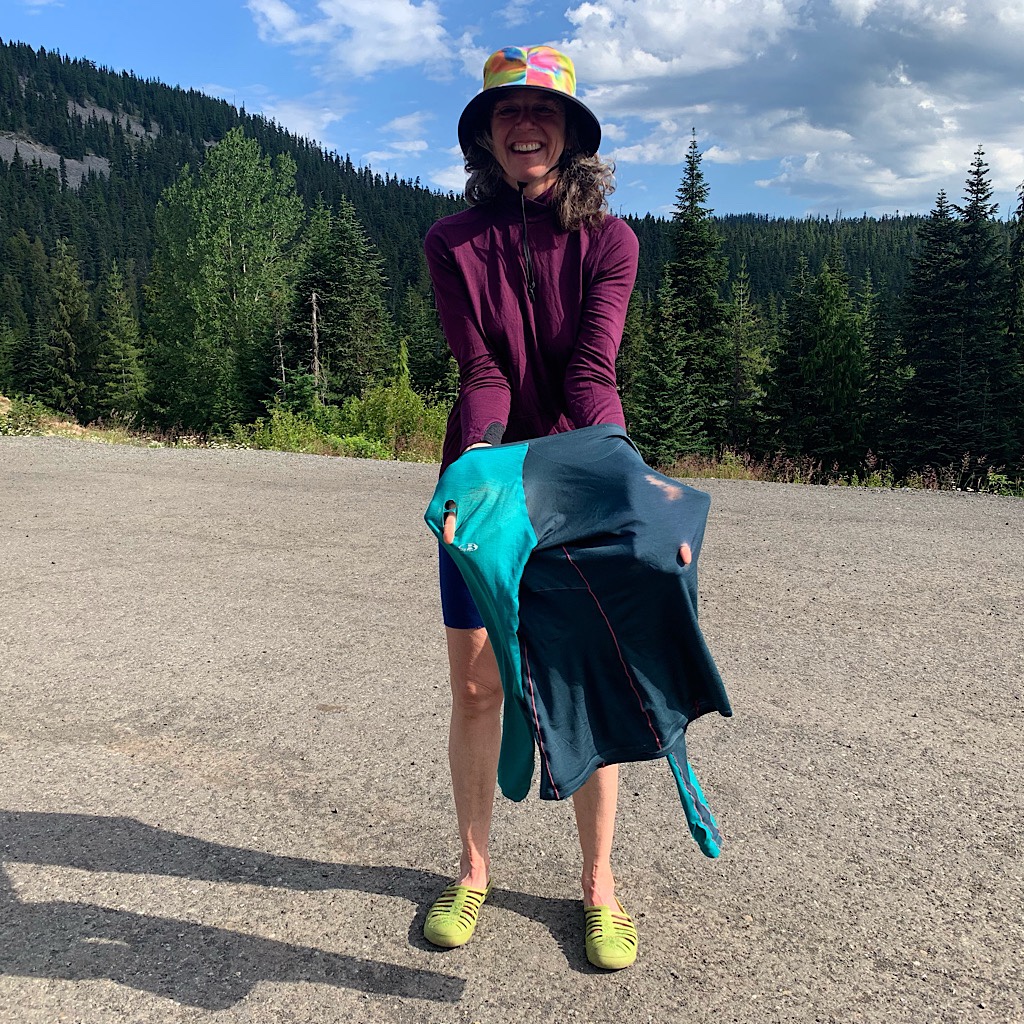
Updated gear list now available. You can access it on google docs and take it with you!
Walking the Pacific Crest Trail was one of the best things I have done in my life – second only to walking the Te Araroa, and both of those hikes were accomplished in one calendar year!
btw, I just turned 55, and that’s a pretty cool feat…feet?…for a middle aged gal, wouldn’t you say? I’m feeling mildly bad ass.
Oddly enough, Richard pointed out that it took me two years to plan for my walk in New Zealand, while under the meltdown circumstances upon my return to Minnesota last spring, it took me less than two weeks to plan the PCT! I guess a girl’s gotta do what a girl’s gotta do.
Of course, the reason it took such a short period to pack up for another thru-hike was due mostly to having made terrific choices with my gear for New Zealand. That as well as turning around any problems, breakages and replacements in a timely fashion. That meant that most everything worked and held up well.
Most everything. Including me.
So without further ado, below is my full report and updated gear list from the PCT thru-hike, 2019.
Let’s start with the winners The Pack: Granite Gear Crown2 60, aka: “Olive Oyl”
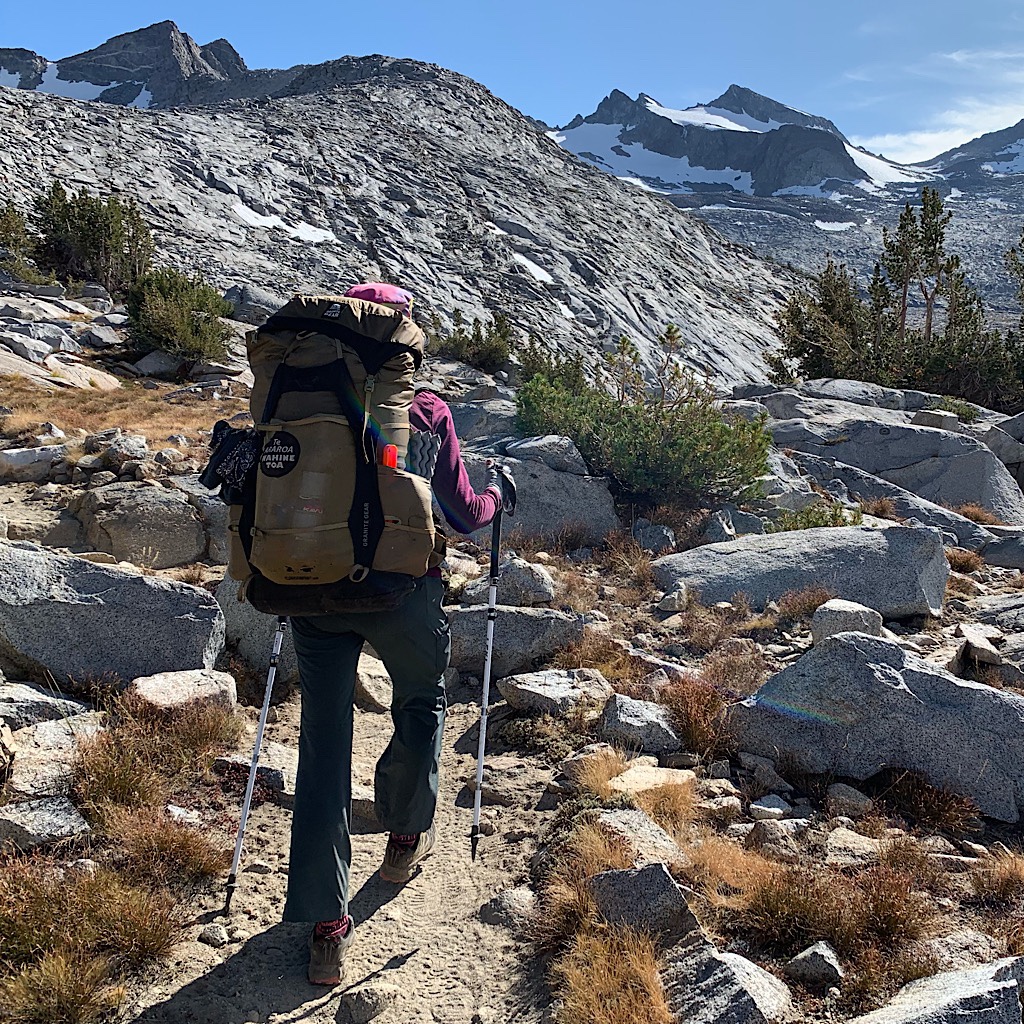
Olive Oyl continued to be a real champ as my trusted carrying device, storage unit, backrest and constant companion. I am a bonafide Granite Gear gal, happily supporting this top-notch company from my home state of Minnesota – and tickled that they choose to support me too. Please help close the circle by checking out their website and let me know what you think.
She’s not fat, just fluffy.
While lighter packs exist on the market, the Crown2 60 has heaps of space and plenty of pockets. There simply is no need to add any extras to carry all I need. In the end, her slightly abovd ultra-lite weight mattered little.
However, in New Zealand, I removed her lid – or brain – to cut down on weight. But then decided to put it to use for the PCT, finding a separate storage space was invaluable, holding my camp sandals and cowgirl-camping ground sheet by day, and my hat/sunglasses/sungloves/hairband/buff system by night. I felt way more organized. Although it didn’t keep me from losing one glove and my wallet. Boo!
Granite Gear places three huge pockets on the outside, the largest holds two 1-liter Smart Water bottles plus my Sawyer filter. In the desert, I easily stored two more bottles in the side pockets. I should point out, though, that the mesh – especially on the back – ripped into holy relic-style bits. While looking well-loved, it fortunately wasn’t enough damage to eject the water bottles.
Besides, those ripped spots are perfect to sew on my trail patches.
I gave Olive a real work out. Several straps simply broke off and one zippered hip pocket lost its zip. But even after packing her to the limit in the Sierra with a fully loaded bear vault, the shoulder straps frayed, but held fast.
I lost nearly twenty pounds on the PCT even though I ate massive quantities of food. I admit, I will need to seriously reconsider where I am acquiring my calories, and pack higher-fat content meals in the future, but that’s a discussion for another blog. I already possess a light frame, but with less fat, my lumbar spine protruded and I was vulnerable to chafing.
I resolved this by stuffing my Therm-a-Rest sit pad in between pack and back. It worked perfectly, but since it wasn’t affixed permanently, the sit pad dropped several times, and I even left it behind to be rescued by kind fellow hikers.
The future? I plan to fix up what’s busted and continue taking Olive Oyl with me as far – and as long – as I can walk. She’s up to the task.
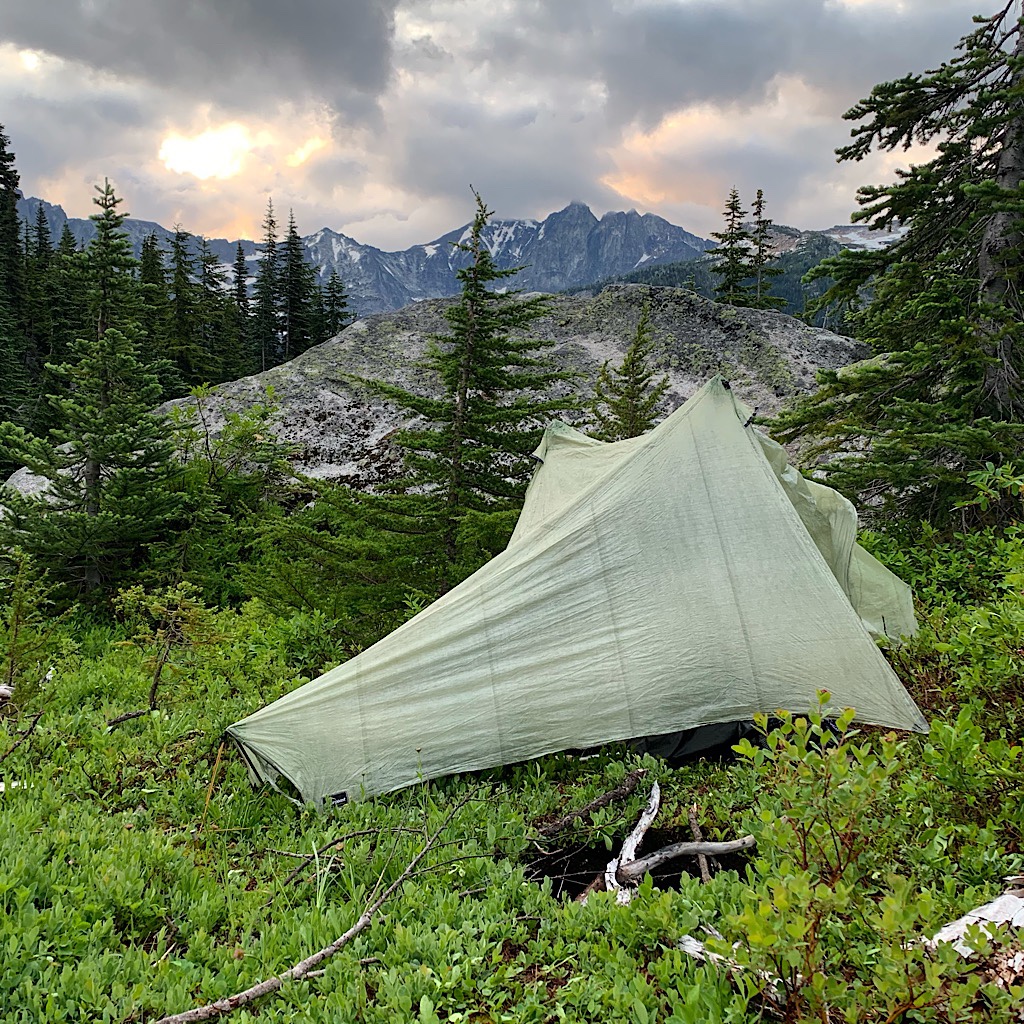
The Tent: Tarptent Notch Li with a dynamee tarp and silnylon partial solid tent, aka: “The Alicoop”
I did not see as many tarptents on the trail as I expected which was a disappointment. These are tents with the least amount of faff to set, while still offering maximum protection. And the company makes superb tents with serious attention to detail and getting things right. Check out their site if only to see the groovy video flying above a forest of tents. Tell them I sent you.
In New Zealand, I was pelted with rain almost daily and the alicoop kept me cozy and dry. On the PCT, in Washington in particular, she started to develop condensation. There wasn’t a leak, per se, rather water collected on the tarp, touched the bug net and created a small pool that inevitably dripped down on me. Not pleasant at all!
As it turns out, this was partially my fault since I did not create proper ridgeline tension. Henry Shires, owner of Tarptent, explained to me that Dynamee shrinks over time. When the end-to-end tension is too taut, the roof will create a curve, like a smile, or in my case, a smirk.
Once he pointed this out to me, I learned how to create a flatter roofline by loosening tension on the ends and keeping the sides more taut. Sadly, I became an expert at this just as I left the North Cascades for a dryer climes.
But wait, there’s more!
By the time I got to California’s Sierra in late September, I had rain, snow, sleet, hail, snow pellets, freezing drizzle and full-on freezing rain. There were two nights that the alicoop froze solid making this wonderful crinkly sound in the wind, one only a musician could love.
We had only about an inch of snow, so I was able to punch the tarp from inside any clear any buildup, but it should be pointed out that the Notch Li is not designed for heavy snow. In spite of all she’s been through, she performed beautifully in these lighter conditions without any visible damage.
This held true for heavy winds on an exposed ridge above the Mojave Desert. She billowed, snapped, and whistled in big gusts, but remained standing. I want to note here that I after that rough night, I stopped setting her in wind, sleeping instead “cowgirl” style.
I am seeing some wear and tear in the way of tiny pinholes and a bit of shredding around the edges, nothing to stop my using her in the future, but I wonder if silnylon would be stronger and more durable than dynamee. Certainly nylon is cheaper and the added weight is negligible.
The future? I’ll continue using the alicoop as long as she lasts. She is the perfect size and weight for my needs as a solo thru-hiker, though I’ll likely pack extra stakes and guylines to help increase ridgeline tension especially if I expect to be in rainy conditions.
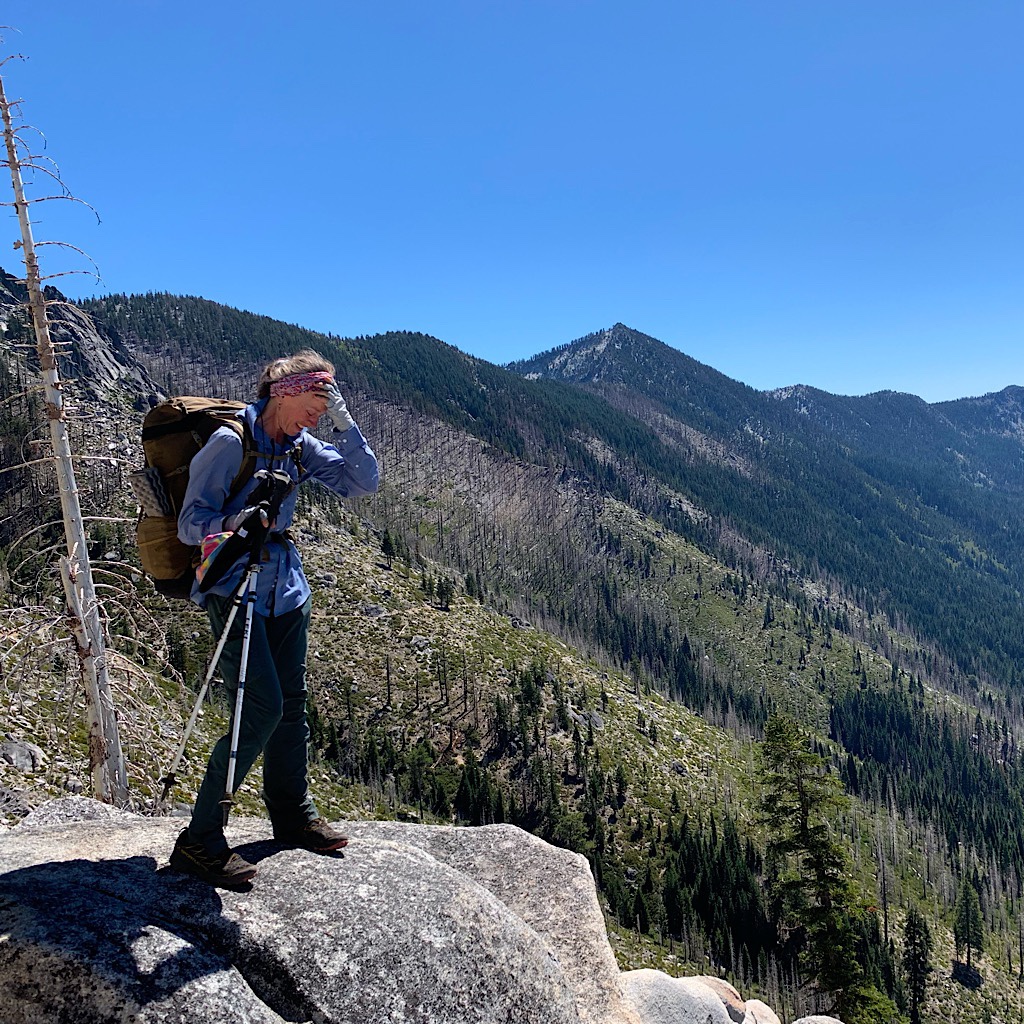
Trekking poles: Leki Micro Vario Carbon, aka: “The Miss Pearls”
Aside from the fact that I can’t set the alicoop without them, hiking poles are an absolute essential for any serious thru-hiker. Balance, power, efficiency, and safety are all increased with poles. I hardly saw a hiker without them, even when they were carrying minimal weight.
That being said, I did see hikers using all sorts of variations-on-the-theme – old ski poles, large branches, and a variety of adjustable poles from other manufacturers. In my opinion, Leki is the best. Durable, adjustable, and easy to grip for mile upon mile. Speaking of grip, Leki has vastly improved them in the ten years since I began using their poles, stretching a slightly spingy material far over the pole so a walker can easily change the length of the useable part of the pole in mid-stride just by sliding down her hands. The height adjustments are superior though I rarely moved the poles beyond small increments when setting the tent. And they pack down to nothing.
In Nelson Lakes National Park, New Zealand, I bent one of my poles after a spectacular fall and Leki provided me with a new pair. I was grateful in spite of the fact that they sent me ones made of carbon. I was concerned that should I fall, they wouldn’t bend like the aluminum Lekis, but shatter.
I beat up The Miss Pearls a lot, tossing them down anytime I had to take a break, pounding them into dirt, sand, rock, snow, and through rushing water, all while assuming they’d do their job, holding my weight and keeping me safe. They were simply indestructible and had the added bonus of being very light, a hard-to-miss fact fact when walking thousands of miles.
Oh, and they’re perfect for gently waking a sunning rattlesnake and urging him aside and off trail so you can pass.
The future? I’m a Leki girl from here all the way to through to my dotage.
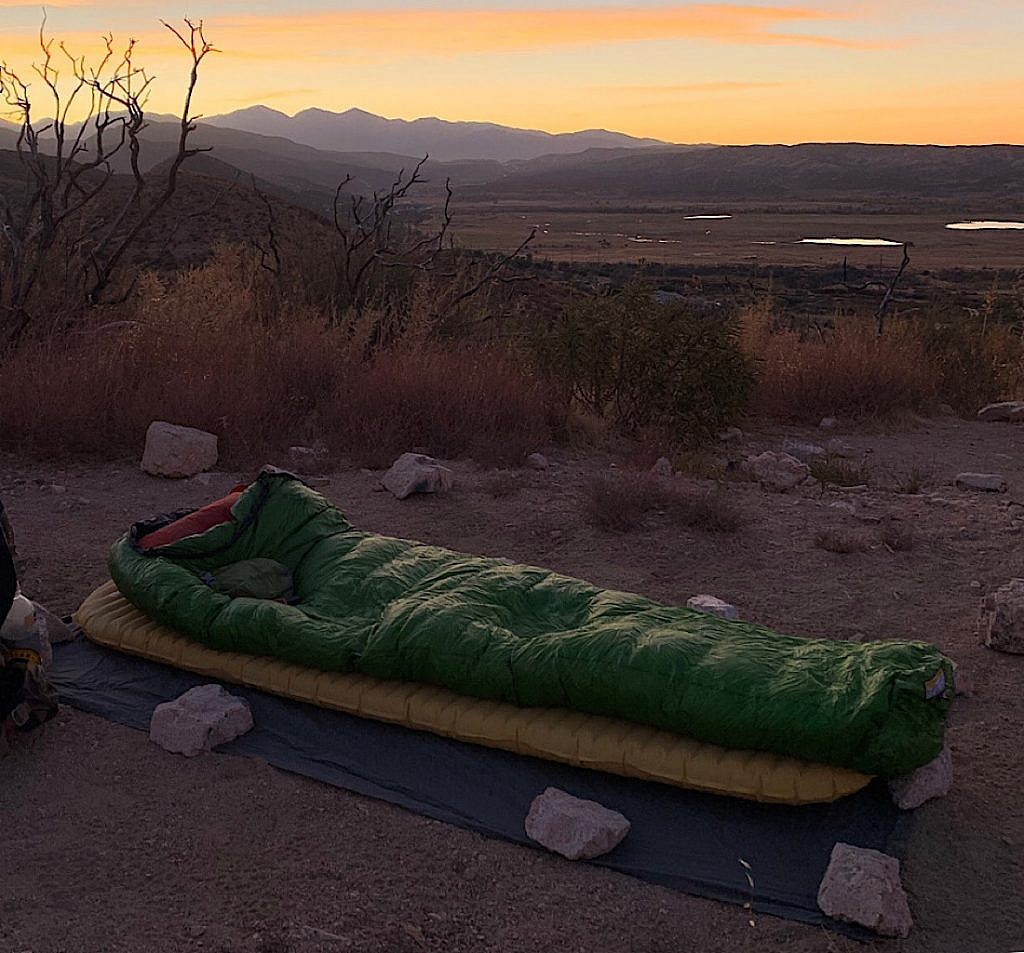
Sleep System: Hammock Gear Burrow Econ 20, wide
Ah well, the sleep system. That’s where things kinda broke down. It all started on day two in Washington, when I camped alongside Hopkins Lake and was jarred awake by a monstrous clap of thunder, rain pouring into my open door. Water pooled on the nylon and the feathers clumped. Utter disaster. This was no way to start a thru-hike.
Trying to stay calm, I dried things with my bandana but never could quite reclaim the quilt’s original loft. This was only exacerbated by the fact that after I returned from New Zealand and wanted to free my nostrils of that mousy thru-hiker smell, I washed the quilt and found it near impossible to spread the drying feathers evenly throughout.
Hammock Gear explained to me that they offer open baffles on their quilts so users can distribute the feathers where they need them. This makes no sense to me. My feeling is open baffles simply cause feathers to bunch up in one place, leaving flattened sections of nylon in other places, like directly over your body. I worked until my fingers cramped trying to move the feathers around, but never fully succeeded. I was cold in Washington, and with drips forming on the alicoop, I never felt dry. and cozy
Of course, as I advanced south, the quilt serviced me fine as a kind of drape over my body. But definitely not in the Sierra. When I reached Yosemite National Park, I sent Richard a panicked message through satellite asking him to send me my warmer bag STAT! In three days, my Western Mountaineering Versalite, aka “Big Greenie” arrived at the Mammoth Lake Post Office and you have never seen a happier camper.
That being said, I would like to say something here about temperature ratings. If you are a woman with a slight frame, you will likely need a far warmer bag than recommended. The quilt is rated for 20 degrees. I was inside a tent, out of the wind, with all my clothes on – including rain gear – and using my Sea-to-Summit Thermolite Reactor Extreme liner that claims to add 25 degrees of warmth. That would mean I should have felt comfortable even when the temperature dropped below freezing. But that was hardly the case.
To contrast, the Versalite is rated to 10 degrees. Some of those nights in the Sierra felt brutally cold, but I doubt the temperature dropped all the way to 10. Yet there I lay right on the edge of shivering. Next time, when I’m ready to buy a new bag, I will add at least ten degrees to the rating before purchasing.
The future? A quilt is truly not enough coverage for a thru-hike unless the conditions are warm or muggy. The Versalite is bulky and took up the entire bottom of my pack, but it was life saver.
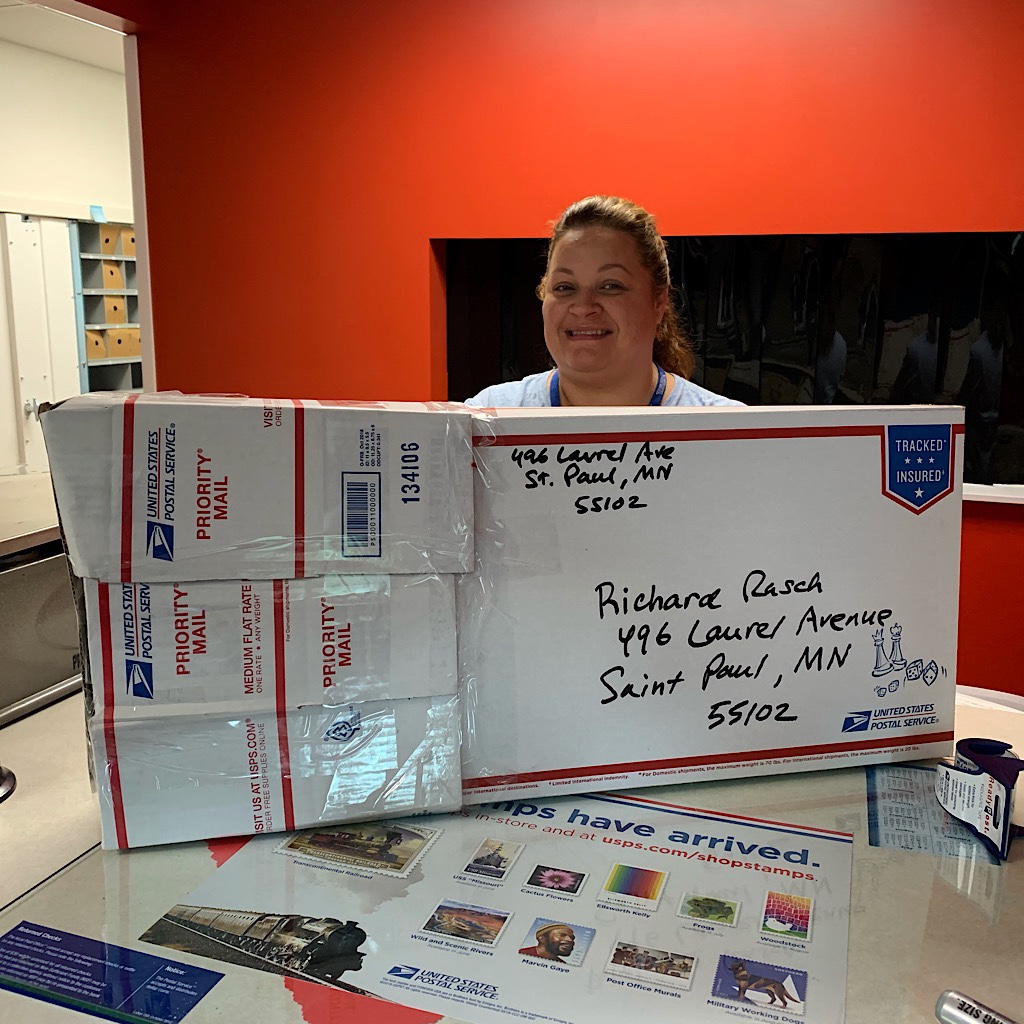
Those were the biggies, but here are a few more odds-n-ends:
My Therm-a-Rest Neoair Xlite mattress rocked it (again.) Just think of all those nights I slept on different surfaces and not one puncture. Never, ever. The loud crinkly sound does seem to go away over time. I was warm…er…then I might have been, insulated off the ground. But these are not wide mattresses, so if you’re a sprawler, you’ll tend to fall off and never figure out just where to put your arms. I settled with prayer pose.
My friend Colleen-the-Machine could never make this mattress work, wanting one for her short stature with plenty of room to spread out. And the stuff sack Therm-a-Rest sent is utterly useless. I found a Sawyer mesh bag left in a hiker box that worked perfectly.None-the-less, I’ll still be sticking with this mattress as it’s light and just right.
My Montbell pillow is a bit like laying on a plastic notebook, but it conformed to my head, never losing its shape, my neck crick-free in the morning. I know you can use a stuff sack with extra clothes as your pillow, but I was wearing all my clothes to bed at one point and, in my opinion, a dedicated pillow is a must after the age of 50.
Granite Gear stuffsacks are perfection itself. I highly recommend eVent drysil which can be compressed before closing and weighs next to nothing. I never saw a need to use compression straps, so save your money – and added weight – and just get these bags – or use a garbage bag. Olive Oyl was soaked all the way through in Washington, but my clothes and sleeping bag remained crispy dry and I kept them separated in their own bags, which really helped when unpacking onto sodden ground.
The Soto Amicus stove worked fine even after I stepped on it and bent one arm to the point my pot would not rest on it properly. Fortunately, a section-hiker at camp packed a folding knife with every possible tool and could bend it back in shape. The stove’s ignition stopped working briefly, then somehow, mysteriously, started working again. One drawback of this stove is that if my fuel was getting low, it would not burn very strongly. This was frustrating, and I often drank cold coffee rather than wait for the thin flame to boil water.
The Mini Swiss Army knife is all one will really need, until they step on their stove, then they’ll need friends with bigger knives. I swear by my Sea to Summit long handled spoon because I can’t bear tines and I don’t like dipping my sleeve in my food. Enough said. My Snow Peak Titanium pot is light, but maybe I’ll drop cooking next time and cold soak. A stove a fuel is a lot of faff…maybe…your thoughts?
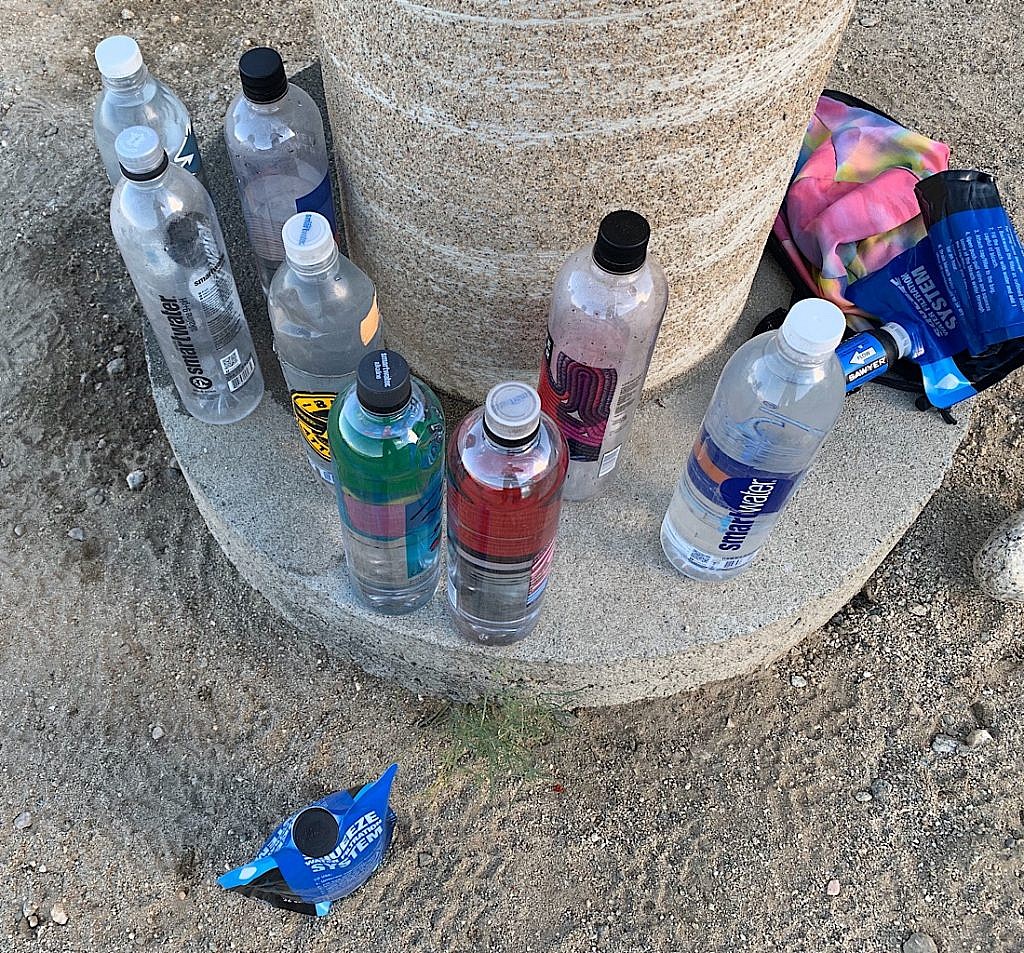
The Sawyer Squeeze water filter is an incredibly effective piece of equipment. While I love my MSR pump, it’s far too heavy for a thru-hike even if it’s easier to use. Just ask anyone who’s had to squeeze ice cold water through a minuscule opening until they cried in pain. Many hikers simply left their Sawyer on a disposable water bottle. The most ubiquitous being Smart Water, which now has competition with Pepsi’s Life Wtr, copying their tall, thin, sleek design perfect for a backpack’s pocket.
I often heard loud crackly crunches as hikers tried to filter water from one plastic bottle to another or directly into their mouths. I opted to use Sawyers water bags for my collected water and attach the filter directly to a plastic bottle through the use of a coupler. This has the added benefit of making backwashing easier.
How often did I need to backwash the filter? Often enough, mainly after filtering lake water with a lot of sediment. The bags invariably spring leaks over time and need to be replaced, but I found them easy to use if adding weight and complication. Do prepare to collect water with a scoop, like your cook pot, pour it into a bag, then squeeze that into the water bottle. Yes, it can make you a little crazed at times, but I didn’t get sick from untreated water and I was not very clean on this hike.
I own the “one point” squeeze, though several people seemed happy with the Micro-squeeze which weighs micro-less. Stay away from the Sawyer Mini, which filters even slower and clogs more easily. And, for goodness sake, don’t let the Sawyer Squeeze freeze. It will damage the filter irreparably and you’ll need to acquire a new one. Where and when?! Exactly. Prepare to sleep with your filter inside your sleeping bag (inside a plastic bag so water doesn’t spill everywhere) on cold nights, and always pack a few extra iodine pills just in case.
I never even put batteries into my Black Diamond headlamp because I never used it, completing all my hiking during the day. I never used reading glasses, either, though I read from my Kobo Aura reader nearly every night, enlarging the font to “old lady size.” It’s super lightweight, water proof and survived the Sierra without cracking.
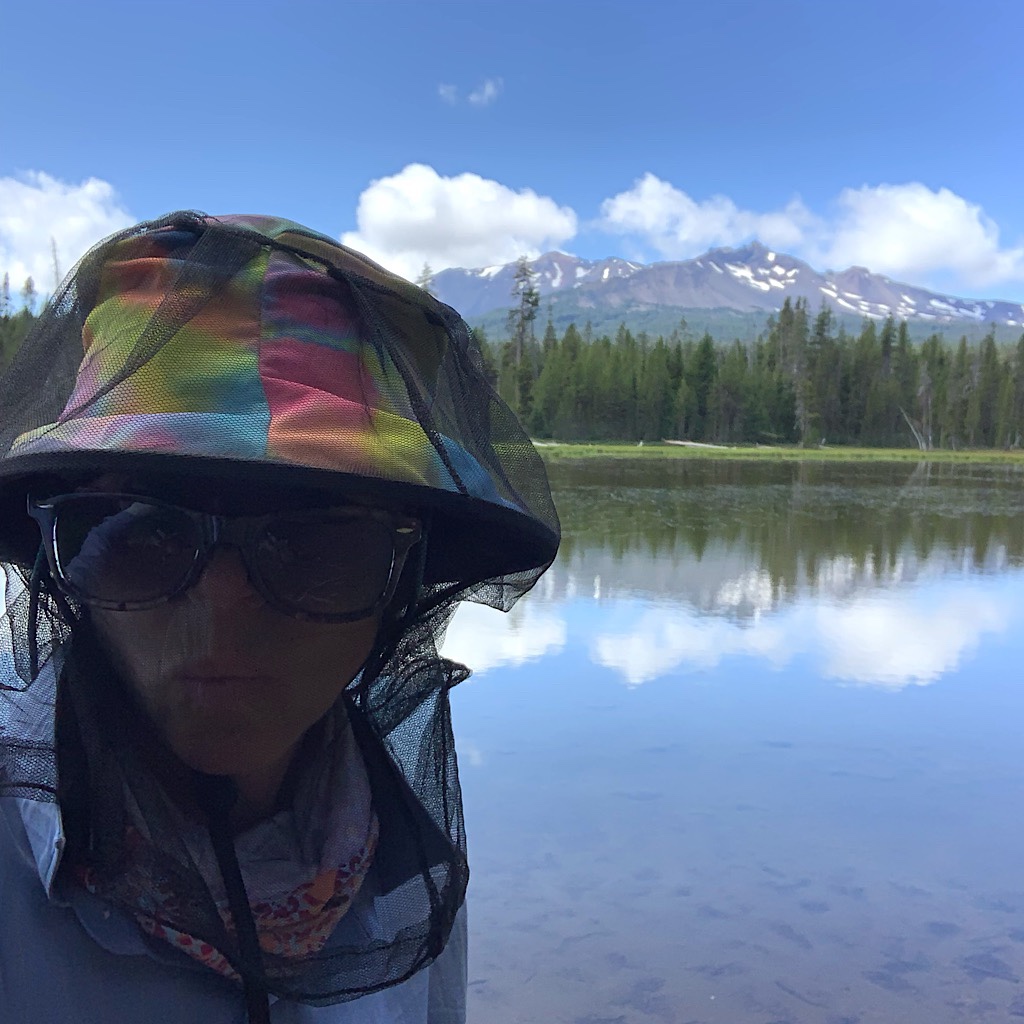
Kavu fisherman’s chillba, aka “Mad Hatter Hat” was the Blissful Hiker signature. I still wore sunscreen on my nose and under my eyes as the brim is not especially wide, but I will never go out without my favorite and most complimented hat. Kavu, I love you!
I went through four pairs of La Sportiva Akyra mountain running shoes. This is the best all around hiking shoe I could trust on slick rock, snow, day after day of pounding. The laces break too fast, even if they stay tied through an entire day of wear. I’d like to see this improved in the future.
I swear by Balega Enduro quarter socks. They fit perfectly, cupping the heel and never slouching. I was blister-free in wet Washington, dry Southern California and the cold Sierra as well as after being on my feet for twelve hours a day. The other amazing thing? These puppies don’t wear out fast. Balega socks beat out all other socks!
I needed to buy a set of silicone toe-separators which I highly recommend if your feet are arthritic and bending towards each other. Mine are so deformed, they were creating ingrown toenails on both sides and the little separators fixed that up immediately.
I used Superfeet high arch insoles, ripping out the minimalist insoles provided by La Sportiva. Admittedly, I walked on them for two long distance hikes, plus a few more. They were no longer orange when I tossed them out in San Diego, but the most important element – the plastic support – was in perfect shape.
In fact, my clothing rocked it with a few small exceptions.
- Mosquitos can eat you alive right through Merino wool.
- A men’s dress shirt, which I wore through all of Oregon and Northern California, does not protect you from sunburn.
- My fake crocs melted and shrunk, so I replaced them with flipflops that I found in a hiker box. Take camp shoes, your feet will thank you.
- The REI rollup pants have a superb internal cinching system, but the roll-up concept is a failure of bunchy messiness. Mine disintegrated before the Sierra. Thank you, Barb, for giving me another pair!
- You won’t be able to get your big warm mittens through the loops of your walking sticks or hold onto them very well.
- Unless you want a finger tan, get sungloves that cover your entire hand.
- A buff won’t protect your neck from sunburn and you will look like someone tried to choke you. Shoulda used sunscreen or a turtleneck…
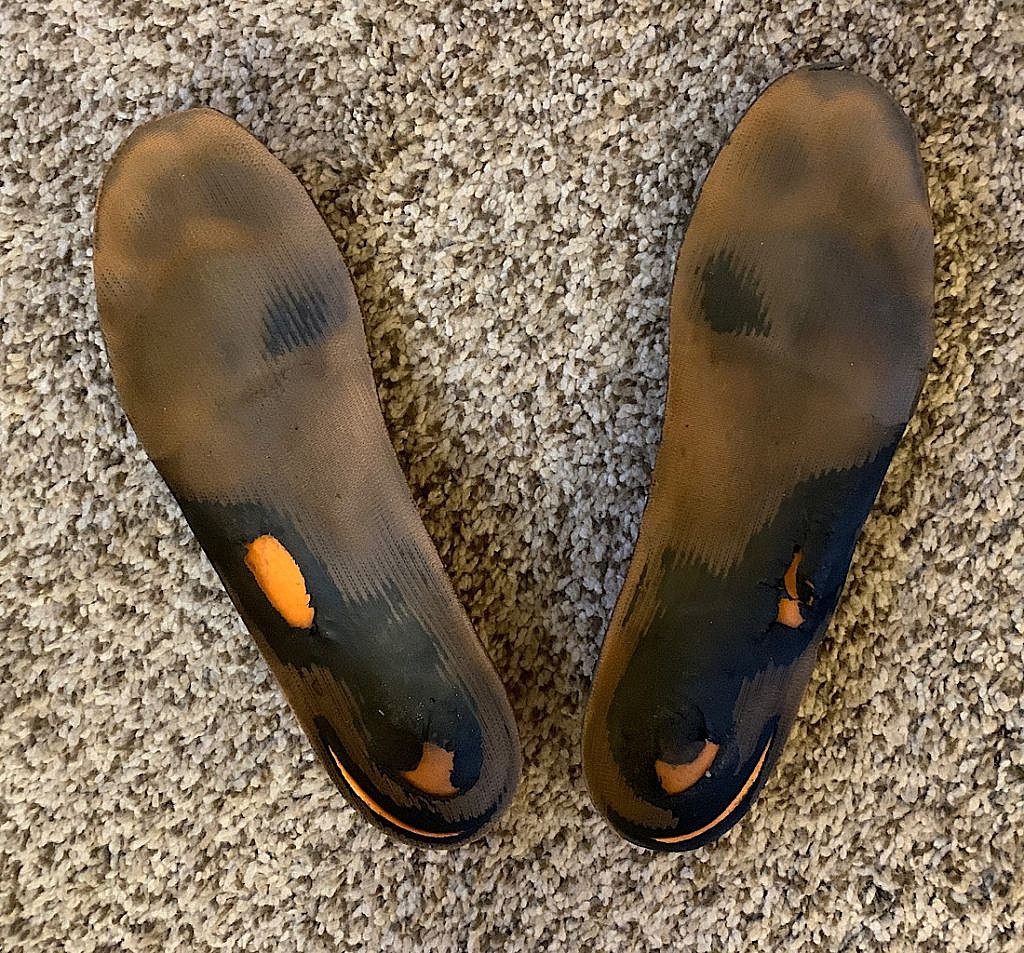
My extras for the North Cascades and the Sierra worked great. I never used my ice ax or crampons, though I walked across a few snow fields that posed some serious danger. I moved quickly and stepped into others tracks, slipping once and arresting with my hiking pole before smashing into rocks below. I do not recommend this tactic!
Obviously.
I also took an extra jacket and leggings for the cold, damp conditions plus a sleeping bag liner, an absolute luxury, if a bit heavy and bulky.
It is required to carry a bear-proof container for your food and anything else containing a scent from the Hoover Wilderness to Kennedy Meadows. I used the bear vault, the replacement one after Brenda and my catastrophe on the Border Route.
I did not have a similar issue, but was careful never to tighten the lid too much. I crammed so much in that box, used it as a seat and watched a big, beautiful babe of a beast lumber right by my camp, likely realizing it wasn’t worth the effort to try and bust in and steal food.
Addendum: I just received a question off-line on how I managed to open the bear-proof clips to unscrew the top of the bear vault. Did I use my fingers or a tool? I used the end of my long-handled spoon. Worked like a dream, especially in the bitter cold.
Ladies, I know you want a touch of color and to protect your lips from the UV rays, so I highly recommend Blistex Lip Vibrance. This lip blam never melted in my pants pocket and was another of my signature looks that actually matched my hat perfectly! I actually was briefly given the trail name, “Lipstick…”
Bandanas are cheap and quick drying. Microfiber just didn’t cut it as well for me as these easily replaced squares. I toed them on the outside of Olive Oyl and used one for the pot and one for the pee.
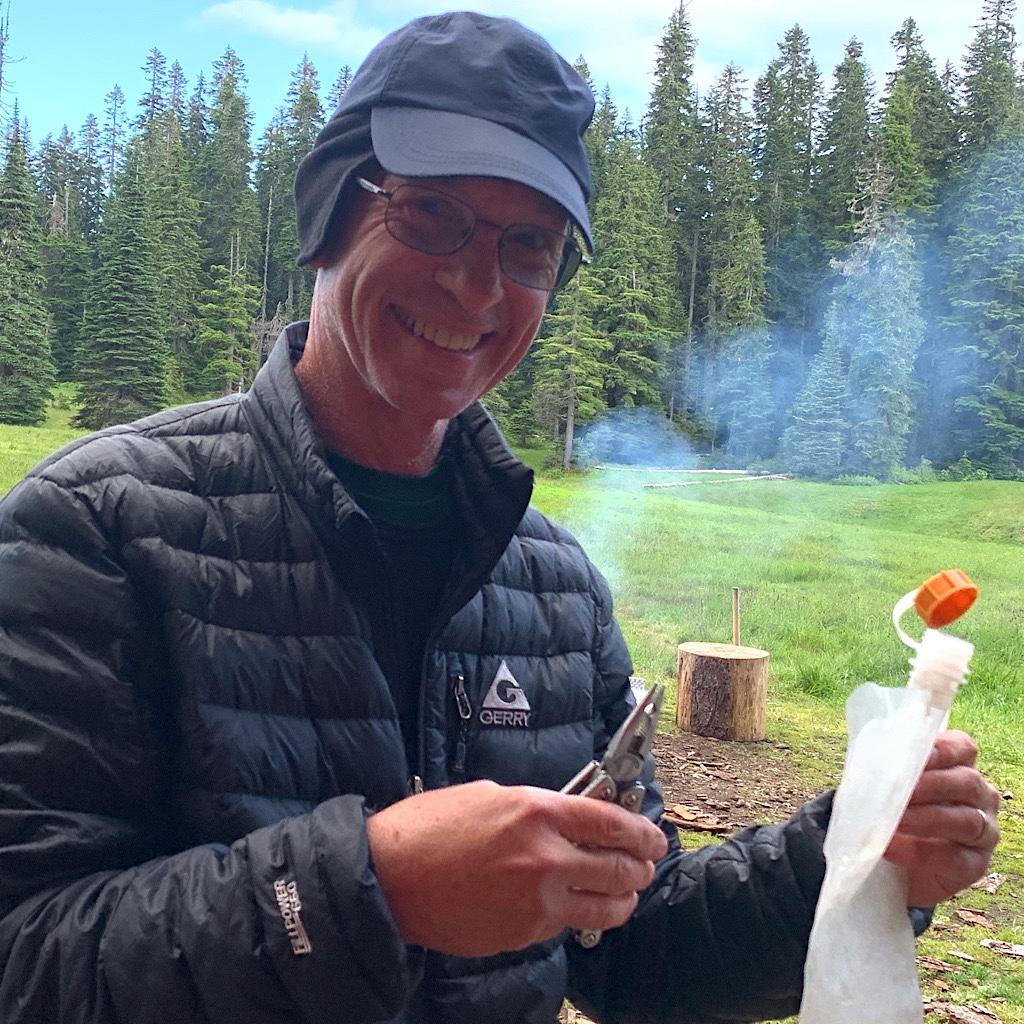
Did I really need all those electronics? A big phone, a big charger, a microphone and headphones??
Yup. As a blogger, photographer, and visual-audio essay creator, I needed all of it. You can likely cut back on power and drop the audio gear, but get the best waterproof phone you can afford with a large screen, maximum memory and a superior camera. I broke some of the cardinal rules by using the phone for navigation too, dispensing with paper maps. This can be done on a trail of this level of popularity and such clear signage. (mostly) My phone acted as my computer, where I took notes by day, wrote the blog at night, sorted, edited and sized pictures for the web, edited and mixed sound, and connected with the outside world.
Of course, the big worry was if anything happened to the phone like dropping it in a rushing river or off a cliff, or simply smashing it. I did drop it – a lot! – and was grateful for the Belkin screen protector which has already been replaced twice. I also uploaded my work to the cloud as often as was possible.
Perhaps the most important bit of gear was the 3 1/2 ounce Garmin inReach mini two-way GPS. Whenever anyone asks me how we manage our successful marriage and close relationship, I tell them through this tiny device hitched to my belt buckle. It enabled Richard to follow my every move and also gave us the freedom to contact each other from virtually any place on the planet.
OK, well maybe not from deep inside a canyon or cave, but pretty much anywhere I could get a clear view of the sky. Garmin requires a subscription which is a bit confusing, but does allow you to tailor things to your needs, plus suspend when not in use. A GPS was absolutely essential.
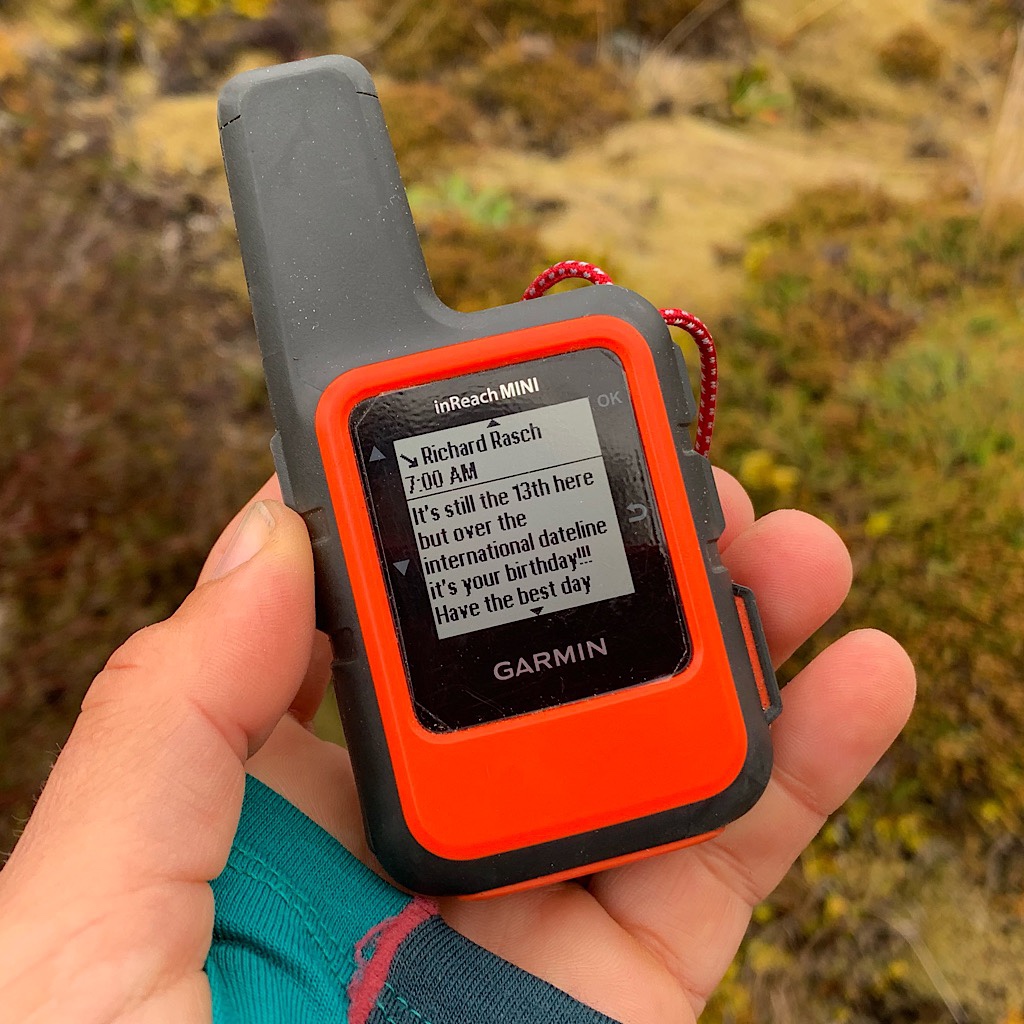
So how does all this feel, you might wonder. Its just a bunch of stuff that makes a thru-hike happen, it’s pretty academic. Yes, we want quality and durability. We want gear that’s light, so the carrying part is doable. We want to be safe, prepared for all conditions, and certain we’ve made good decisions how to spend our money, especially since the best backpacking gear is expensive.
For me, that’s all a consideration, but it was the little touches that made things special. When I named my gear – or more accurately, you named them for me. When I wasn’t afraid to wear something eccentrically colorful like my hat, or make do with cast offs like my huge Oxford shirt or sew on patches and have friends write messages on my gear.
Gear choices do make a kind of statement, very much in the same way that our choice of car tells people what kind of person we are. I needed to cover myself from head-to-toe to avoid a sunburn, but I could do so and still create a conversation. I could still be approachable and open.
And when I fell in love with the space I made for myself for so many months, day after day, I began to realize not so much that stuff doesn’t count – you really can’t take it with you, so why collect so much stuff?! – but more that the things we do choose to have, can create a kind of soulful environment for our journey both on and off the trail.
It should come as no surprise that the very first task I wanted to accomplish when I got home was to clean out my house. Not to move or because I owned too much, which I definitely do, but to make decisions about what serves me, what resonates and still gives me joy, hope, initiative, and also delightful memories.
In doing so, I made space for what’s to come and questioned my spirit and where she is right now, listening to which objects give me those at least one of those four qualities I listed and how can they serve me moving forward. That’s why reviewing the gear I used on this hike is so important to me – and I hope to you too, because each piece of gear has become a part of me, all the way from the bag that held it all to the lowly water filter that sustained me.
I certainly hope some of this information is helpful when you plan your next hike, even if it’s a short weekend jaunt. I am always here to answer questions and I look forward to a lively discussion should we disagree!
Happy hiking! Singet, Anita Hike, Blissful and alison
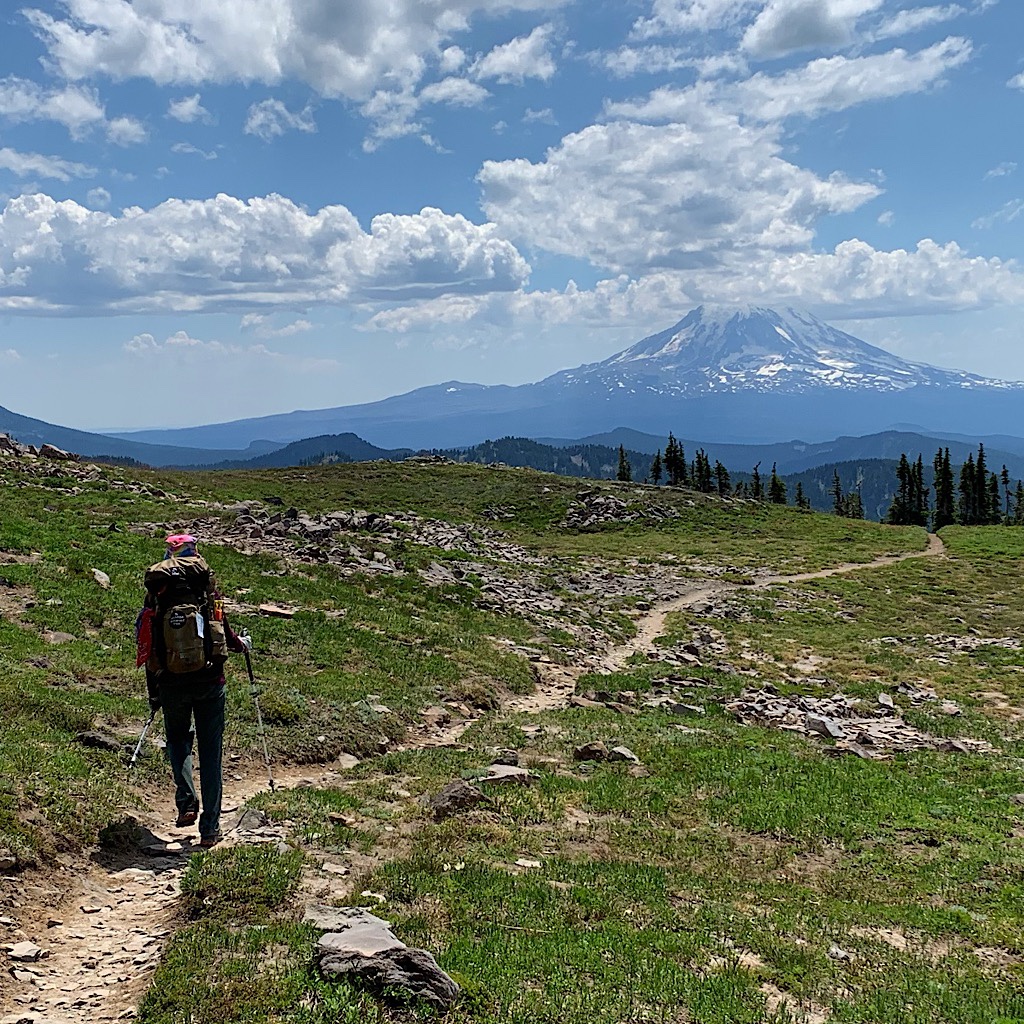


8 Responses
I’d caution against jettisoning a heat source for the sake of light gear. On the day that hypothermia conditions sap more energy than a body can regenerate, hot drinks and/or hot food makes a real difference.
good point! so true
I just received a question off-line on how I unclipped the bear-proof clips to unscrew the top of the bear vault. Did I use my fingers or a tool. I used the end of my Sea-to-Summit long-handled spoon. It worked like a dream, especially in the bitter cold.
Having walked several legs with you I can vouch how well you chose the necessary gear and how efficiently you packed it in Olive Oyl. With my huge rucksack and many stuffsacks I still have much to learn:):)
Just reading your evocative review brings back so many memories and pulls one towards the great outdoors and away from UK’s cold and damp winter.
at least Minnesota has a ‘dry’ cold! I agree that having things really organized and easy to access makes for a happier hike, especially if you need to get to something fast, like the gummy bears 🐥
Alison….you are organized…..and…..a survivor! Zola
ha! somewhat…